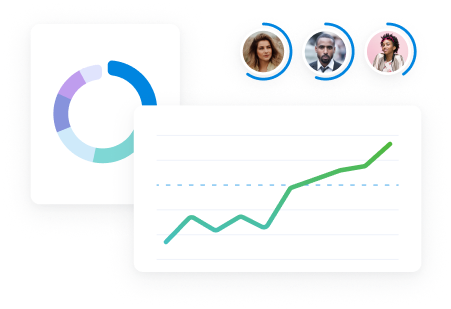At first, project capacity planning is pretty straightforward. But it gets trickier as you grow.
You need to coordinate across multiple teams and business units—all with different utilization rates, skill sets, and project types.
We asked seasoned operators—consultants, project advisors, and agency leads—how they handle it.
Their advice shaped this 5-step framework for service firms: a practical way to spot triggers, scope work, and make trade-offs before projects derail.
Step 1: Spot the trigger and run a quick sanity check
Several different events can trigger the need for team capacity planning.
Common triggers include:
- New pipeline deals: A qualified lead moves into a later stage of your sales cycle. If the deal closes, you need to deliver the work. Can your team actually take it on?
- Clients asking for more work: An existing client wants to expand scope, fast-track delivery, or add a new project. Can you stretch your current team without compromising quality or other projects?
- Project timeline shifts: A delayed or accelerated project forces you to adjust your plans. You now need to reassign people or fill unexpected resource gaps.
- Team changes: A team member resigns, goes on leave, or gets promoted. Your staff availability just changed, requiring a rebalance.
- Red flags in utilization reports: Your operations or delivery team spots employees who’re overbooked or underutilized. You can get ahead of the issue if you assign or reallocate work now.
- Quarterly or annual planning: Leadership wants to align hiring, revenue goals, or investment plans with delivery capacity. This is your chance to make sure you have appropriate coverage.
To stay on top of these resource planning triggers, Marissa Taffer, founder of M. Taffer Consulting, recommends a weekly capacity meeting.
We keep the forecasting tool or spreadsheet updated, then meet as a PM/ops team to review everyone’s workload. From there, we can rebalance when someone’s overbooked or assign extra work if someone has capacity.
But not every trigger demands an instant, full capacity plan. To figure out whether you need one, perform a “sanity check” first whenever a new deal comes in.
For example, before committing to new projects, Karl Sakas, president and lead advisor at Sakas & Company, asks:
Can we accomplish this work well without requiring heroic efforts? If it would take late nights or cut corners elsewhere, we’ll pause or refer it out. Our best work comes when we have room to think clearly and prepare fully.
To make these decisions quickly, Karl uses his firm’s “Values, Goals, and Resources” framework.
“If there’s a mismatch on any of those, it’s usually a fast no,” he says. “Not because we don’t want to help—but because forced fits usually lead to regret for everyone.”
For the “Resources” component, use Scoro’s “Bookings” module to do a quick capacity check.
Select “Roles” in the “Grouped by” menu. Then, scan capacity across delivery functions like design, consulting, and project management.
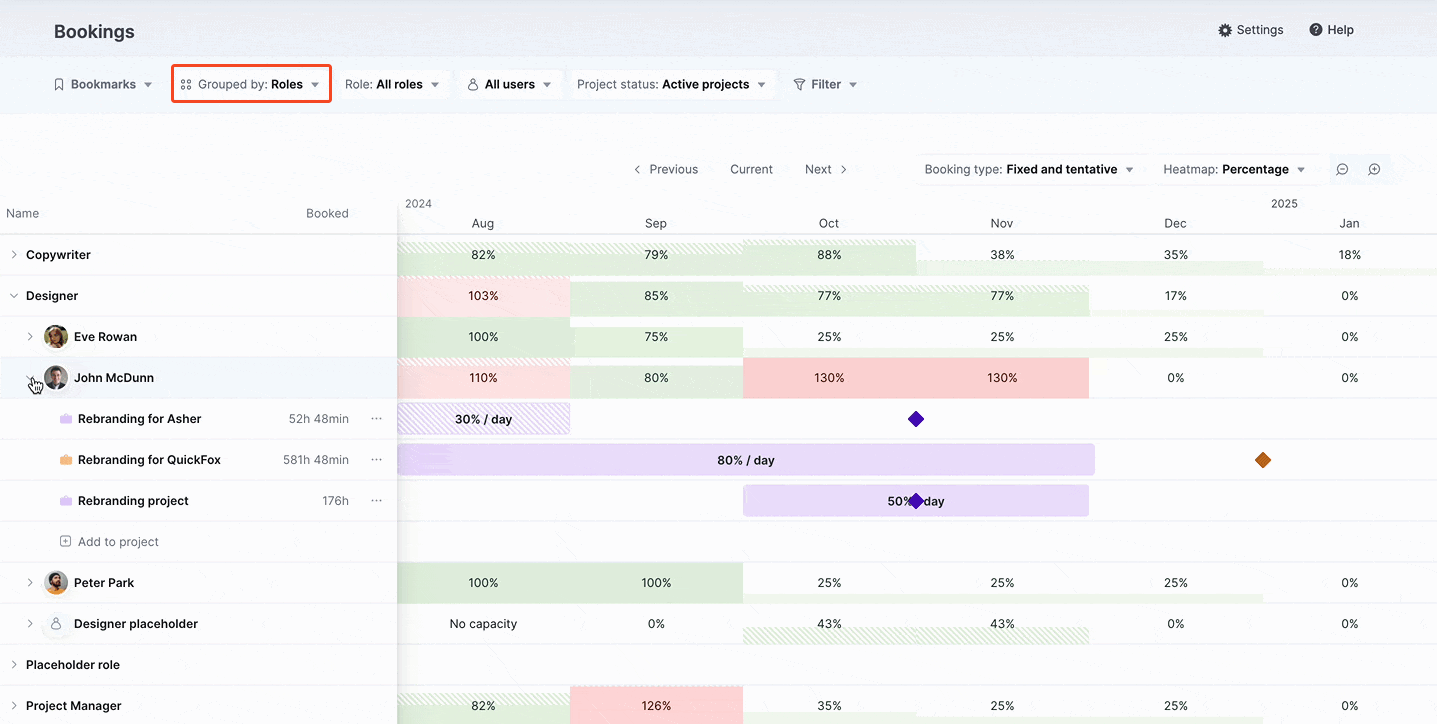
Use the heatmap to guide your capacity check:
- Green: Available
- Red: Overbooked
- Gray: No availability
- Yellow corner: Time off
- Striped: Tentative bookings
- Solid: Fixed bookings
- Purple: Specific bookings
Say you just got verbal confirmation from a new prospect on a three-month content and design retainer. Here, if you look four weeks out, you’ll see that your senior consultant is overbooked. But your designer has 100% availability. You might be able to take on the work, so it’s likely worth scoping.
But if your entire team is overbooked, it’s a good idea to pause. Instead of outright declining the work, consider outsourcing some work or evaluating hiring needs.
Top Tip
Don’t know if you should take on a project? Use our F.A.S.T. framework to assess fit, available team, scope, and timeline—and decide if the opportunity is worth reshuffling existing workloads.
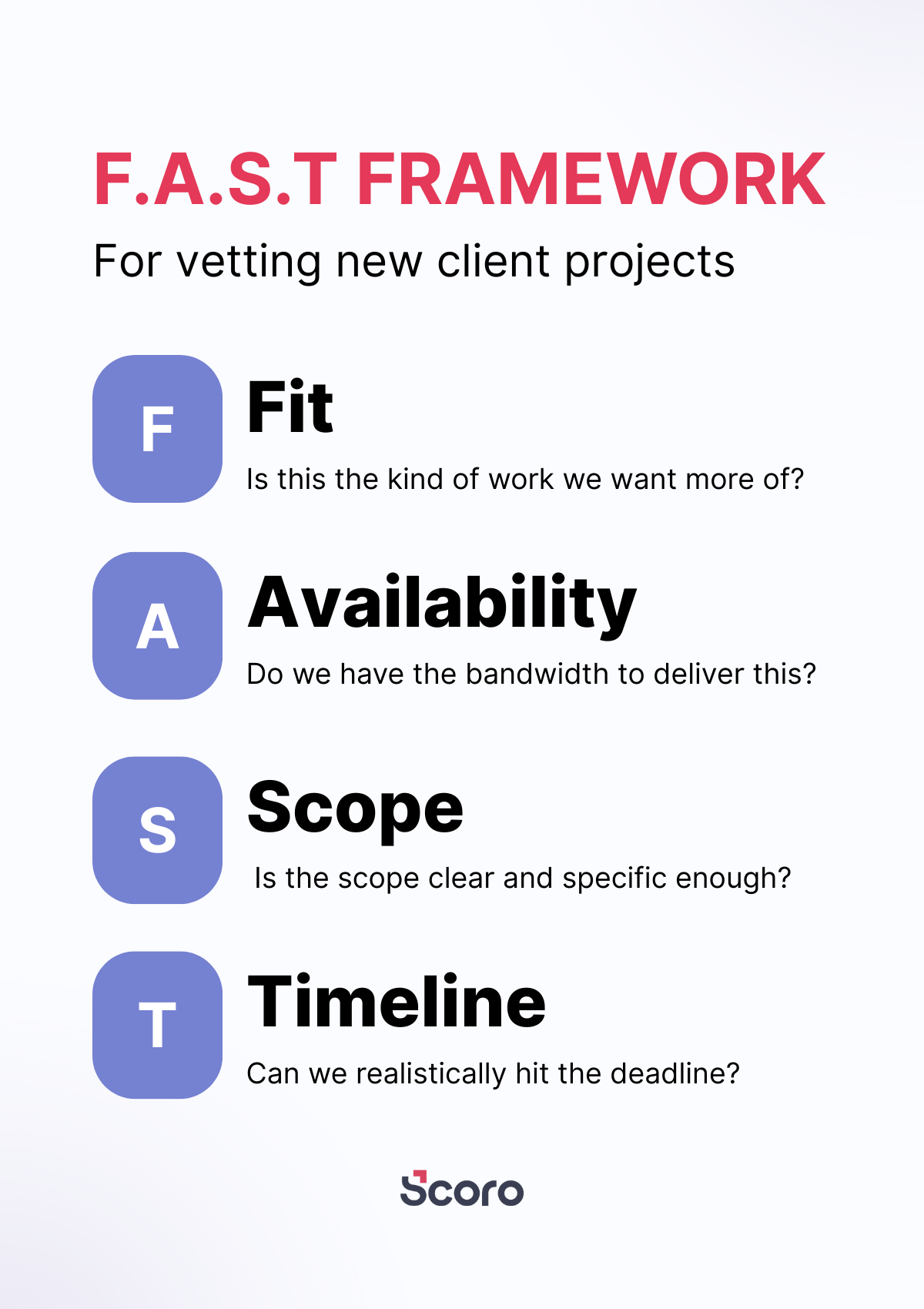
Step 2: Scope the work and create a rough plan
When projects pass your quick capacity planning sanity check, they’re ready for scoping. Which means asking: what would this project require from my team?
One way to do this is by using previous projects as templates. Which allows for faster scoping.
How similar is this to other projects? And adjust the estimates based on complexity or even client personality (additional hours if we know the client will need additional comms or they have a lot of stakeholder involvement).
But when you need to scope a totally new type of project, start from scratch by clearly defining the deliverables.
Say you need to deliver a full website relaunch and content for 10 webpages.
Estimate the effort needed per role. In this case, you might need:
- 10 hours from your strategist
- 10 hours from your project manager
- 40 hours from your website designer
- 40 hours from your copywriter
And don’t forget to factor in non-billable time (e.g., marketing, admin) in your resource planning process.
Then, map out the work to see how it fits with your team’s availability.
Simplify team capacity planning with Scoro’s matrix quoting option. This tool lets you link multiple roles per deliverable and split the hours across those roles.
Your client-facing document only shows a single high-level deliverable. Which keeps things simple by showing the client only what they need to know.
And your internal document includes several roles and breaks down the prices and costs. Which gives you the precise details you need for resource planning and budgeting.
To use it, create a new quote in Scoro’s “Quotes” module.
Enter the deliverable in the “Product | Description” column. Then, press the “Estimate in matrix view” button.
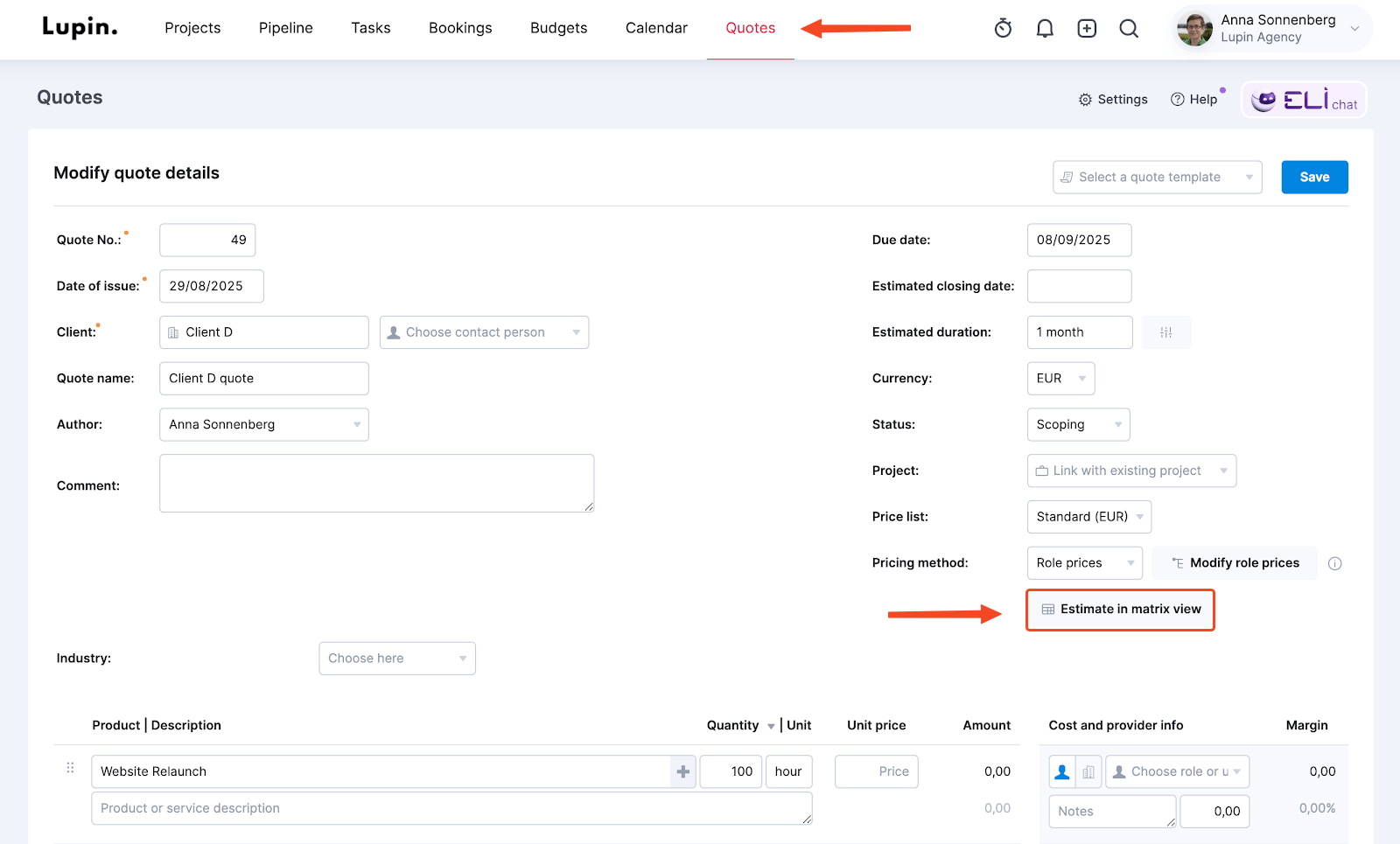
Add each role to the quote matrix, including the estimated hours for each. Use roles rather than specific people for early planning. Click “Apply” to add the details to the quote.

Then, click the “Create project” button to turn the quote into a project. This automatically creates tentative bookings for each role.
Think of these bookings as placeholders. They help you visualize the impact of the project before making more final resource planning decisions.
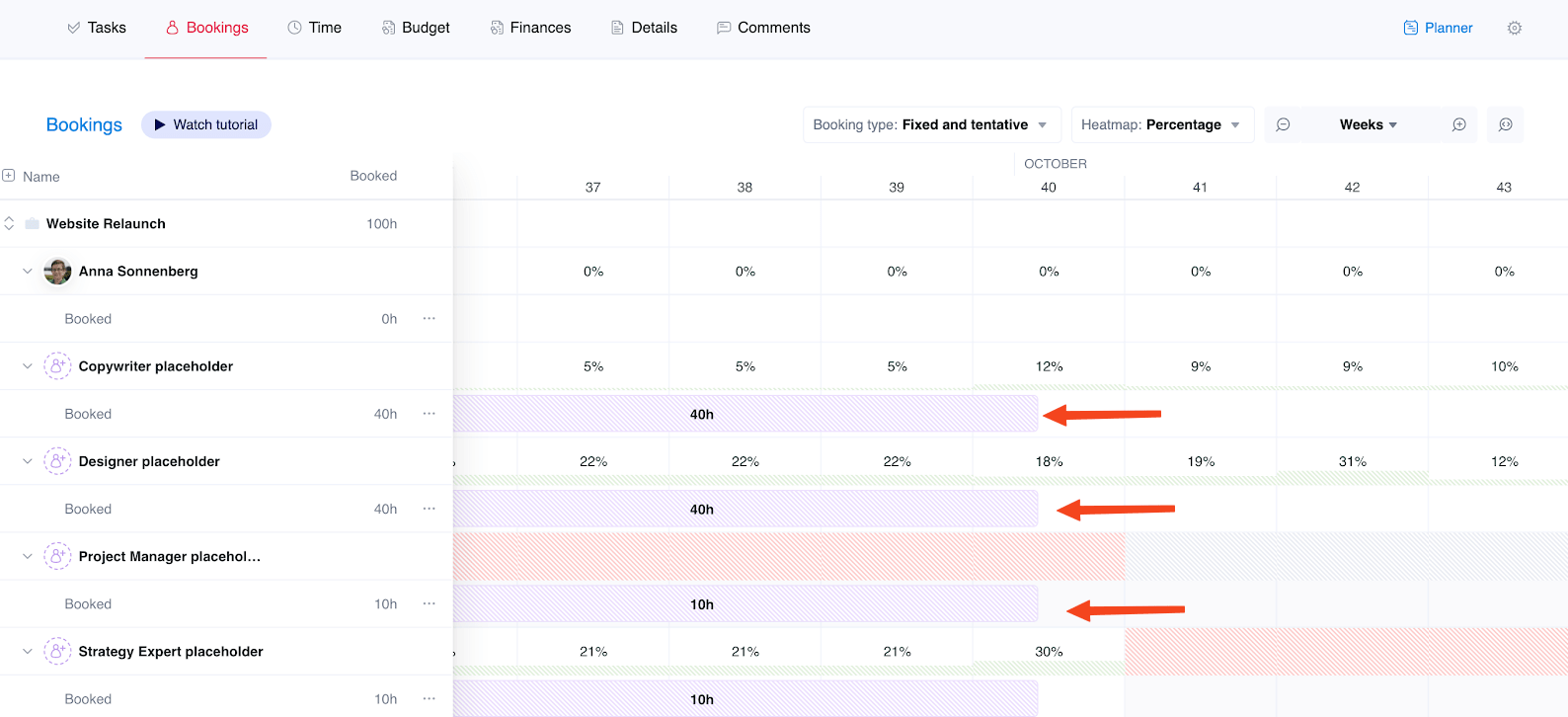
Step 3: Compare forecasted needs with real availability
After scoping the project and gauging the roles and time you need to deliver it, assess your team’s actual availability.
Look for:
- Overlapping projects that create resource conflicts
- People who’re already overbooked or off and can’t take additional work
- Anyone with spare capacity who needs more work to hit resource utilization goals
Without this step, capacity planning falls apart—you won’t know if your team can actually deliver what’s required.
Use Scoro’s “Bookings” heatmap to compare needs with capacity. Select the “Remaining hours” filter to see how many hours each role has. Expand each role to view how booked individual team members are, along with planned time off.
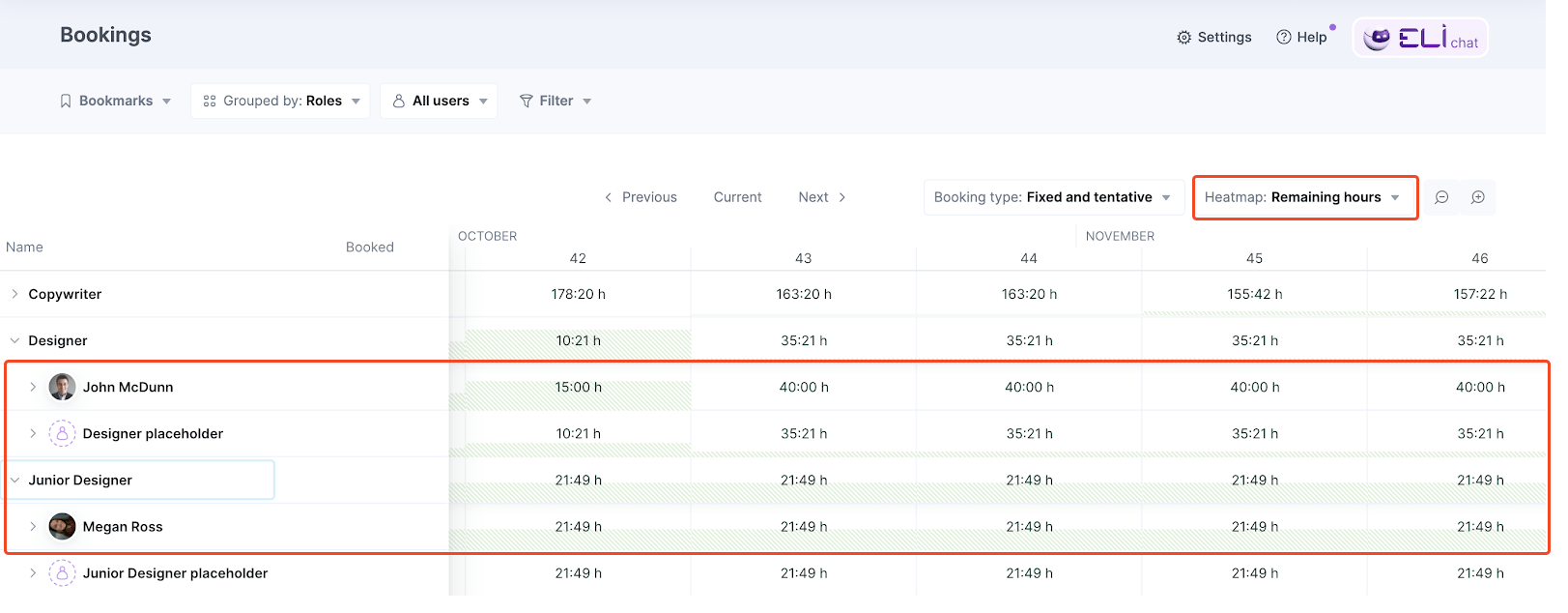
Say senior designer John has 15 hours per week available in October. And your junior designer Megan has over 20 hours per week available.
You can assign most of the outstanding design work to Megan and ask John to oversee. And you can consider outsourcing any additional design work during this period.
It’s also important to check in with team members who’re at or approaching their capacity limit.
As Freia Muehlenbein, owner of Be Reyt Agency Growth Advisory, explains:
Through good reporting and accurate data, we should be able to see when the target level of utilization (typically 65-80%) is maxed out and we’re assigning too much work to our teams. But this data needs to not be taken at face value, as people can become too busy or move beyond their utilization targets for many reasons.
Freia highlights these common reasons why delivery team members become overwhelmed:
- Overservicing
- Personal stress
- Too many projects at one
- Lack of focus time to do the work
- Too much internal or non-billable work impacting headspace
- Too many distractions
“We always need to listen to how individuals feel about their workload,” she says.
In some cases, you can also spot capacity conflicts by reviewing work quality.
George Chasiotis, co-founder of Restartt, recommends analyzing “the quality of the work they produce, how responsive they are, and whether they have the time to share thoughts and ideas on how we can do better.”
Top Tip
If you want to dig deeper into how operational decisions impact delivery teams, listen to “Are You Helping or Hindering Your Delivery Team?.” Harv Nagra and Galen Low unpack the hidden costs of overloaded PMs, role blending, and tool rollouts gone wrong. And how to build structures that truly support your people.
Step 4: Adjust plans and make trade-offs
Capacity planning in project management rarely works on the first try. After doing a sanity check, scoping the work, and comparing needs with availability, it’s time to make the plan work for reality—or decide if it can’t.
This is the place to be precise. Which means adjusting plans and making trade-offs like:
- Shifting or delaying internal work that isn’t a priority and can wait until next quarter
- Reassigning tasks across junior or senior staff to maximize utilization
- Extending project timelines so you can deliver work without compromising quality
- Bringing in freelancers or contractors when your in-house team is at capacity
If these trade-offs work, you now have a plan you can execute. But if they don’t, it’s time to loop back:
- Revisit the scope: Can you redefine deliverables or schedule them differently? For example, can the copywriting phase take place before the design phase?
- Redo your sanity check: Should this project even move forward with your current resources? Use the F.A.S.T. framework to reassess.
- Escalate to leadership: Check with your leadership team about pushing back on the project scope or client timelines.
As you gather information and make new decisions, adjust your resource plan in real time in Scoro. Head back to the “Bookings” module or the “Bookings” tab for a specific project.
Then, you can:
- Drag and drop bookings across people or days to make better use of team members’ capacity
- Convert tentative bookings to fixed once you’ve confirmed the plan
- Replace role placeholders with individual team members
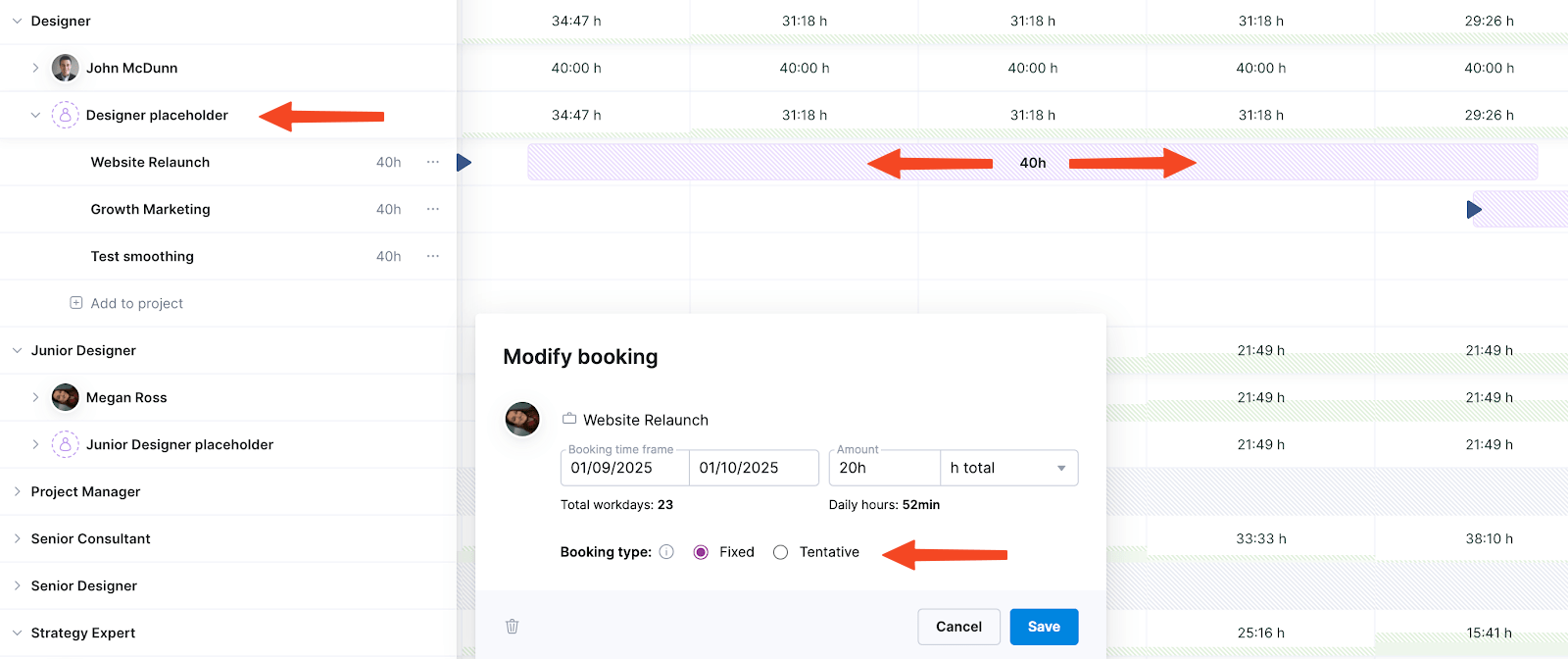
Say Megan can take 20 hours of design work, but the scope requires 40. You can reassign the remaining 20 hours to a freelancer using a fixed booking. That keeps the project timeline in place while balancing the workload.
But keep in mind that if you’re constantly making trade-offs, you might need to make bigger changes. As Karl explains:
If the stress is occasional, a few internal shifts might solve it. But if the same friction keeps showing up—especially around delivery, planning, or decisions—that’s usually the business telling you it needs more hands or a different structure. Left unaddressed, that cycle leads to what we call the Agency Doldrums
Further reading: Don’t get trapped: How to avoid the Agency Doldrums
Step 5: Zoom out and spot long-term issues
Once you’ve finalized your capacity plan for the current project, look at the broader picture and turn short-term capacity checks into a long-term ops advantage.
Use your insights to make improvements across the business. Like advising Sales to adjust pipeline targets based on delivery constraints. Or upskilling team members to address upcoming resource gaps.
And both Marissa and Freia emphasize the importance of using capacity planning data to inform hiring needs.
Here’s how Marissa advises professional service firms to approach hiring:
If a discipline is running at full capacity—typically 32–35 billable hours per week—for three months straight and is expected to stay that way, it’s a sign you may need to hire. That’s assuming your pipeline is healthy and no major projects are about to wrap up or churn.
Before making hiring decisions, Freia recommends checking whether your team is overservicing.
If we’re overservicing, we’re giving time away without getting paid. That means we’re not truly at capacity—we need to rein in overservicing or other inefficiencies.
Scoro’s “Utilization” report makes this kind of long-term planning easier to manage. Zoom out to the “Weeks” or “Months” view to analyze utilization rates for each team member.
Easily compare booked versus available hours. And identify overbooking concerns (in red) or underutilization issues (in green or white)—so you can address them before they cost your firm.
For example, if you consistently see a discipline running close to or above 100% utilization in the weekly view—and it’s been that way for several weeks—it’s a sign you may need to consider a hire.
The key is making sure your pipeline is strong and no major projects are about to end or churn.
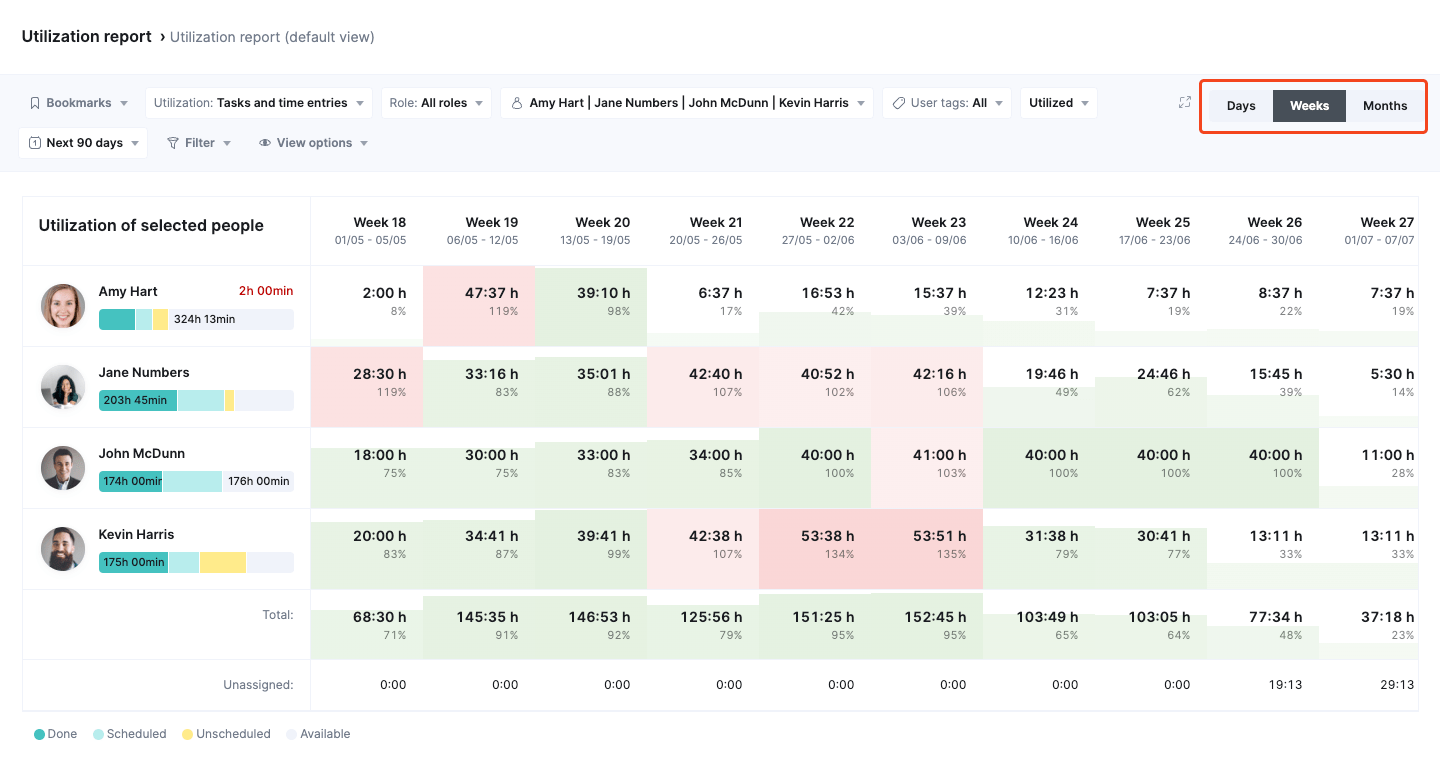
Scoro for efficient project capacity planning
Project capacity planning isn’t about making flawless predictions. It’s about developing a repeatable process that helps you make smart, informed decisions that positively impact your firm’s bottom line.
Take Yellow Cherry for example. Before Scoro, the marketing agency struggled to understand how team members spent time or accurately assess capacity.
After switching to Scoro, Yellow Cherry could easily log billable and non-billable time, track utilization rates, and access utilization reports.
This allowed the agency to rebalance work and avoid unnecessary hiring—and helped them improve their cash flow by over 66%.
Try Scoro for free for 14 days to see how our resource capacity planning tool and matrix planning help you manage workloads and your profitability.






